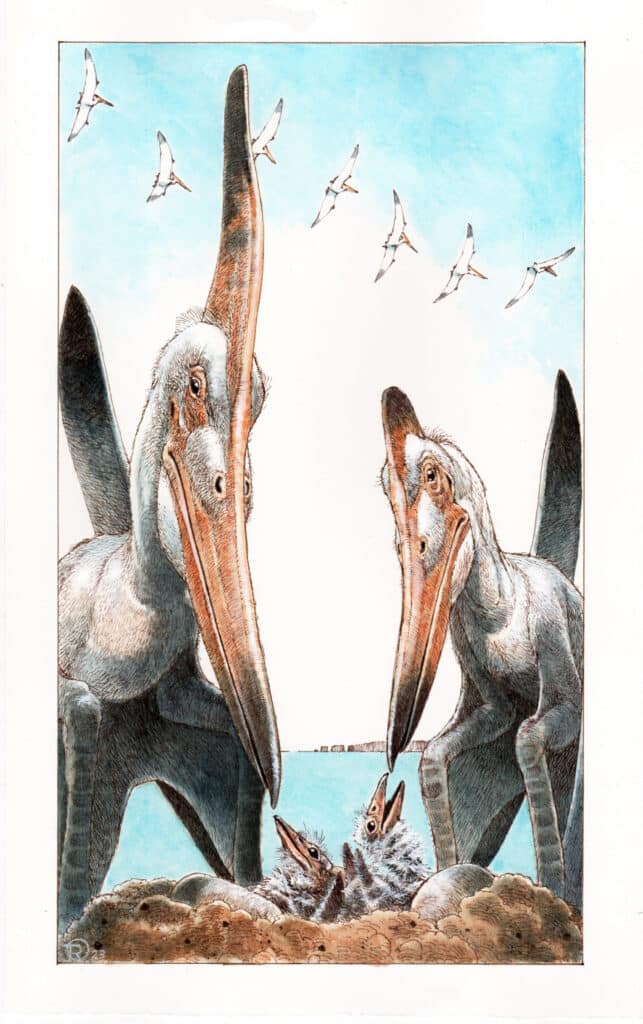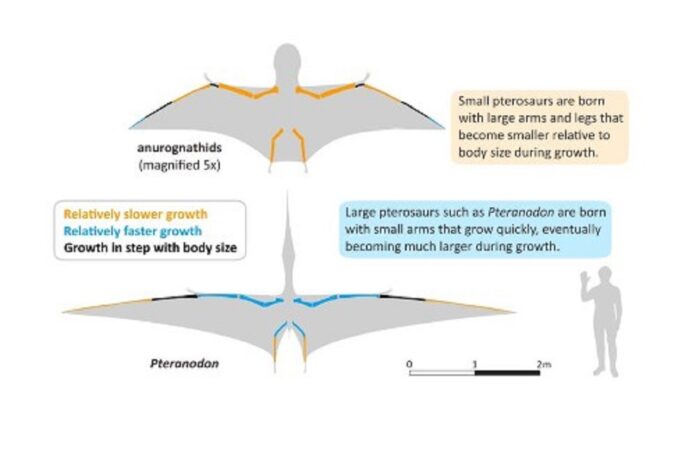Pterosaurs, the winged reptiles that ruled the skies during the Mesozoic era, have long captivated the interest of paleontologists and dinosaur enthusiasts alike. While much is known about their impressive flying abilities, relatively little about their reproductive behaviors and parental care has been understood.
In this study, we delve into the fascinating world of pterosaur parenting to explore whether there were differences in parental care between large pterosaurs and their smaller, earlier counterparts. Through a comparative analysis of fossil evidence and behavioral reconstructions, we seek to shed light on the nurturing behaviors exhibited by these prehistoric creatures and gain insights into their reproductive strategies.
Researchers from Ireland, China, and the UK have studied rare fossils, revealing an evolutionary trade-off between increased parenting and increased size in flying reptiles known as pterosaurs. Their findings, published in Proceedings of the Royal Society B, show that smaller Jurassic pterosaurs had large and robust wings to fly shortly after hatching. However, as pterosaurs evolved into larger species during the Cretaceous period, their babies remained small due to limited egg size. Despite this limitation, the investment in childcare allowed these non-flying offspring to grow into enormous creatures with wingspans of up to 15 meters, far surpassing the size of any known bird.
Lead author Dr. Zixiao Yang from University College Cork said,” had to find examples of pterosaurs where we had at least one hatchling or very young specimen as well as adults so we could study their relative growth rates. In most cases, the delicate skeletons are pretty incomplete. Baby pterosaurs are rare.”

The research team, comprising scientists from Nanjing University, the University of Bristol, and Yunnan University, utilized classic Jurassic specimens from Europe and Cretaceous fossils from North America, alongside discoveries from China, to investigate the relative growth of various body parts in pterosaurs. Professor Baoyu Jiang explained that measurements of skulls, backbones, wings, and hind legs provided valuable data for their analysis. According to Professor Michael Benton, the study focused on allometry, a phenomenon observed in various animals, including pterosaurs, where certain body parts grow faster or slower relative to each other during development.
The findings indicated that bird-sized Jurassic pterosaurs were born with large wings and robust arms and legs, enabling them to fly from birth. However, as they matured, their arms and legs exhibited negative allometry, growing slower than the rest of their bodies.
In their study, Professor Maria McNamara from University College Cork and Dr. David Hone from Queen Mary College London revealed that pterosaur giants from the Cretaceous period followed a different developmental model than their smaller counterparts. While smaller pterosaurs exhibited positive allometry during growth, meaning their key limb bones grew faster than the rest of their bodies, the more giant pterosaurs demonstrated negative allometry. This suggested that the smaller pterosaurs prioritized low-input childcare to save energy. In contrast, the larger ones focused on achieving immense size as adults.
Dr. Zixiao Yang concluded that this evolutionary strategy is similar to what we observe in modern mammals and birds. They also highlighted that parental care behavior changed in pterosaurs at the end of the Jurassic, allowing them to reach massive sizes.
In conclusion, this study provides compelling evidence of parental care in pterosaurs, offering a glimpse into the nurturing behaviors of these fascinating creatures. The discovery of advanced parenting behaviors in large pterosaurs deepens our understanding of their reproductive strategies. It highlights the diverse ways prehistoric organisms ensured the continuation of their species. As paleontological research advances, further insights into the complexities of pterosaur parenting and its implications for their evolutionary history await discovery.
Journal Reference:
- Zixiao Yang, Baoyu Jiang, et al., Allometric wing growth links parental care to pterosaur giantism. Proceedings of the Royal Society B. DOI:10.1098/rspb.2023.1102.
